The Nashville Predators’ 2018-19 season ended in a disappointing loss in the playoffs, and the offseason is in full swing for them. As a team with Stanley Cup aspirations, their offseason is about setting themselves with the best opportunity to win it all in 2019-20. It starts with the Entry Draft and re-signing their own players, and continues in free agency. All in all, this summer figures to be an active one for the Predators. Here are nine items general manager David Poile and his staff need to tend to and mark off their checklist in order to best prepare for next season.
Addressing Top-Six Center Need
Since Ryan Johansen arrived via trade in Jan. 2016, the team has struggled with center depth around him. In Nov. 2017, Poile recognized this, and after failing to land Matt Duchene, he acquired Kyle Turris, who was terrible this season. For starters, he missed 27 games and only posted 23 points in the 55 games he did play. He was underwhelming for a second-line center, especially one with a $6 million cap hit. His struggles were enough that head coach Peter Laviolette dropped him in the lineup at various points and even made him a healthy scratch for two games late in the season. Nick Bonino, Calle Järnkrok, and Colton Sissons regularly replaced Turris. Each produced more than Turris while on a smaller cap hit.
This offseason the Predators need to once and for all address their need for a second-line center. It means either trading for a center with term left on his contract or pursuing Duchene in free agency and finally landing the player they originally intended to get. Which leads us into what to do with Turris.
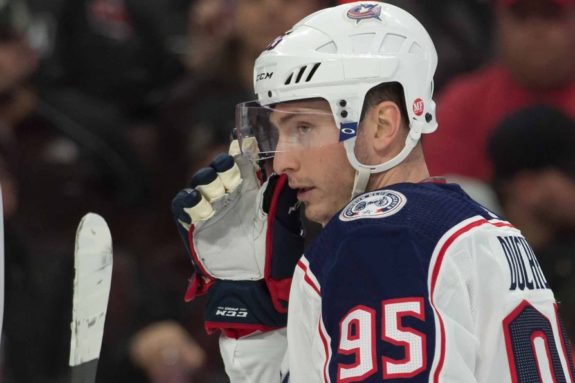
Determine Turris’ Future in Nashville
I’ll keep this short because it’s been talked about at length before and will be again. Turris has been a bust ever since the Predators acquired him and signed him to a six-year, $36 million extension. Since then, he’s scored 20 goals and 65 points in 120 games with Nashville. He’s struggled with injuries and hasn’t produced when healthy. Considering he was supposed to be the team’s second-line center behind Johansen, something has to happen with him, and there are limited options.
One is cross their fingers and hope he improves. He’s looked really good for Team Canada at the World Championships, but then again most would. Another option is trading him without expecting much of a return except cap space. The last is a buyout, and this should be considered a worst-case scenario. That buyout would cost $2 million per year through 2028-29, five years after his contract expires. It’d save the team $4 million per year for the contract’s duration, but they’d be paying on it for five additional years. It’s a route the Predators should avoid if possible.
Adding a Top-Six Winger
Another top-six issue is the lack of a consistent goalscorer who’s always a threat in the offensive zone. This doesn’t necessarily have to be a winger, but it’s the most likely option. The Predators had one 30-goal scorer, Viktor Arvidsson, this season, and two others scored more than 20 goals. In total, the team scored 236 goals in the regular season, 19th-most in the league and third-fewest among playoff teams. Filip Forsberg and Arvidsson are both perennial 30-goal threats, but it remains to be seen if either can hit the 40-goal mark. Both also play on the top line.
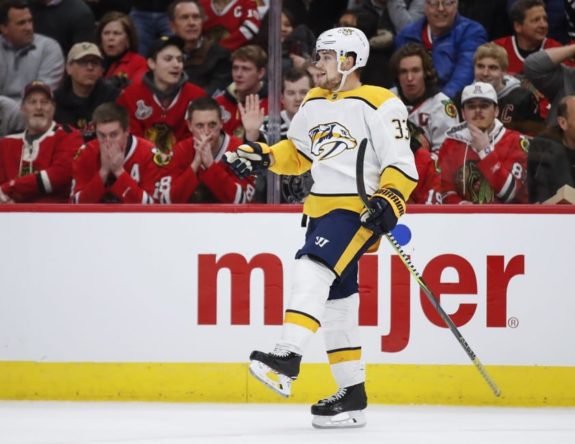
Mikael Granlund plays on the second line and is incredibly talented, but he’s more of a playmaker than a goalscorer. On the opposite wing is Craig Smith, who is best served on the third line. The Predators’ lack of a top-notch scorer was a big reason their power play was horrible and played a role in their offensive struggles in the postseason.
Related: Subban Trade Bait – Who Will Bite?
Their only internal option with a real chance to develop into a top-six goalscorer is Eeli Tolvanen, but it’s unlikely he plays second-line minutes his first full season. That means getting that player through free agency or via trade. Although it’d be nice, the Predators don’t have to land a sniper like Alex Ovechkin to fill this need. Someone like Phil Kessel, Jonathan Huberdeau, or Alex Tuch, who can shoot in stride while still distributing the puck, would be a great fit in Nashville. Now it’s up to Poile to go get that player.
Extend Roman Josi
Roman Josi, the Predators’ captain and number one defenseman, has one year left on his contract. That means on July 1 the team can extend him and not risk losing him to free agency in 2020. Given Josi’s importance to the team, I would expect this deal is announced soon after July 1 and not dragged late into the offseason or even into next season. For several years, Poile’s been great at extending his players below market value. Don’t expect that to happen here.
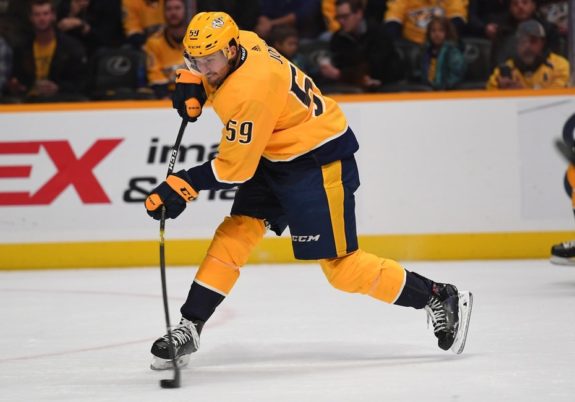
Granted, Josi’s next cap hit will likely be lower than it would be in other cities due to no state income tax in Tennessee, but he deserves to be paid, especially considering his current $4 million cap hit is a vast underpay. Regardless of what it takes, the Predators need to get this deal done. Josi’s simply too important to potentially lose him.
Other Possible Contract Extensions
While Josi headlines Predators’ extension candidates this summer, they do have several others who can be extended on July 1. One is Granlund, whom the Predators acquired at the 2019 Trade Deadline. He currently has a $5.75 million cap hit, which is in line with his production as a member of the Minnesota Wild. However, given that he only played 16 regular-season games with the Predators after the trade, I’m uncertain if the team has seen enough to offer him an extension as soon as July 1. I think Poile will ultimately extend Granlund, but I don’t think it will be immediate.
The other prominent extension candidate is Smith. He’s consistent, scoring at least 20 goals in five of the past six seasons, but never more than 25. His $4.25 million cap hit is somewhat of an underpay given what he would earn on the open market, and an extension likely pushes his cap hit to over $5 million, even on a lengthy contract. That’s risky for a soon-to-be 30-year-old who has likely reached his ceiling. His situation will be one to follow this summer.
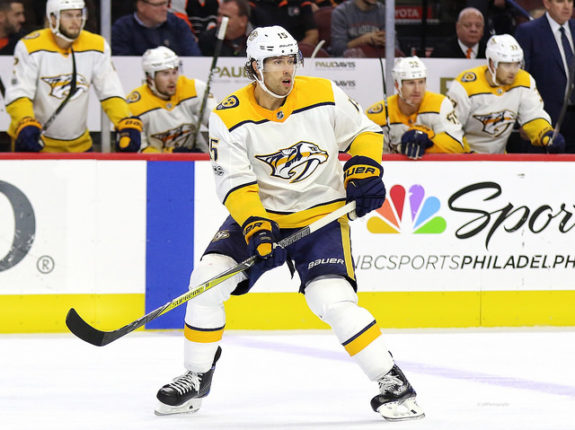
Some lower impact players who can be extended this summer are Austin Watson, Miikka Salomäki, Frédérick Gaudreau, Dan Hamhuis, Yannick Weber, and Matt Irwin. I’m not certain what happens with any of these players. Hamhuis may retire at the end of his contract, while the rest of the players are role players who could be replaced with options from the AHL.
Re-Sign Free Agents
The Predators have relatively few free agents to make decisions on this summer. In total, they have four unrestricted free agents (UFAs) and two restricted free agents (RFAs). The three most notable are RFAs Rocco Grimaldi and Sissons, and UFA Brian Boyle. Grimaldi and Sissons both had career years in 2018-19, and the Predators need to retain both. Grimaldi had five goals and 13 points in 53 games and added a scoring punch to the bottom-six. He also plays a responsible two-way game. He played on a $650,000, two-way contract this season and won’t cost a lot to re-sign, even on a short-term deal.
Related: An Early Look at Predators’ Free Agents
Sissons posted 15 goals and 30 points in 75 games this season while moving throughout the lineup. He showed he can play on every line and move from center to wing. He is at his best playing in the bottom-six, but it’s nice to have a player who can move up as needed. His current contract is a three-year bridge deal with a $625,000 cap hit. I think he’s a candidate to be signed to a five or six-year deal with a team-friendly cap hit, similar to the one Järnkrok signed in July 2016.
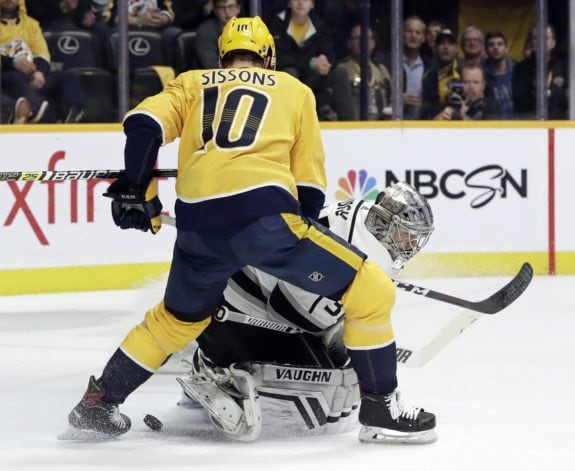
The UFA is Boyle, another 2019 Trade Deadline acquisition. He played the best out of the team’s four acquisitions, with five goals in 26 games. He also had two assists in three playoff games. Boyle most recently played on a two-year deal with a $2.55 million cap hit and he’s never had more than a three-year contract, so I wouldn’t expect him to now look for one at 34 years old. His leadership, physical style, and big body should have the Predators interested in re-signing him. If he were interested in returning on a two-year deal, there’d be virtually no risk involved.
Other free agents are Zac Rinaldo, Wayne Simmonds, and Cody McLeod. I don’t expect the Predators to, nor should they, re-sign any of them. Rinaldo and McLeod are largely enforcers who don’t have a role in the modern NHL. Simmonds is a talented winger whose best attribute is as a net-front presence on the power play. However, he struggled in 2018-19, largely due to injuries, and will price himself out of the Predators’ budget.
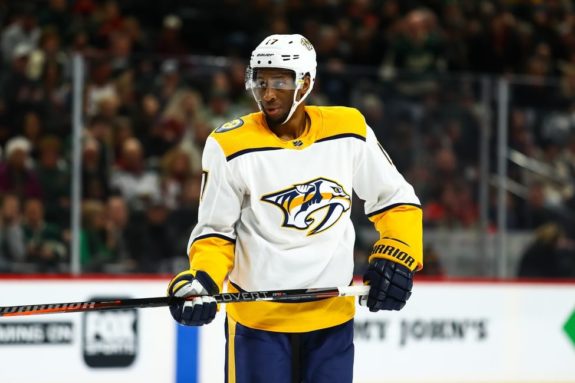
Infuse More Offense into Bottom-Six
The Predators actually had a pretty productive bottom-six in 2018-19, with 164 points among 12 players for an average of 13.7 per player. That’s not bad. What is bad is the manner in which they scored. The Predators aren’t a team that comes at you in waves through all four lines like the Vegas Golden Knights, Tampa Bay Lightning, or St. Louis Blues. Those teams have players on the third and fourth lines who move up the depth chart as spots open.
The Predators’ bottom-six is comprised of role players who are unlikely to ever develop beyond that role. The Pittsburgh Penguins are a team the Predators should look to for inspiration. Over the past few seasons, they called up players like Bryan Rust, Conor Sheary, and Dominik Simon to play in the bottom-six, but all three were capable of playing a middle-six, or even top-six role, as need dictated.
The Predators have talent in the AHL, but few of them got a chance to show it at the NHL level because the bottom-six is so set in stone. Grimaldi was called up out of necessity and thrived. The team needs to create more roster flexibility allow more opportunities for AHLers to prove themselves in Nashville. Rem Pitlick, Yakov Trenin, Laurent Dauphin, and Adam Helewka are a few examples who could do so in 2019-20.
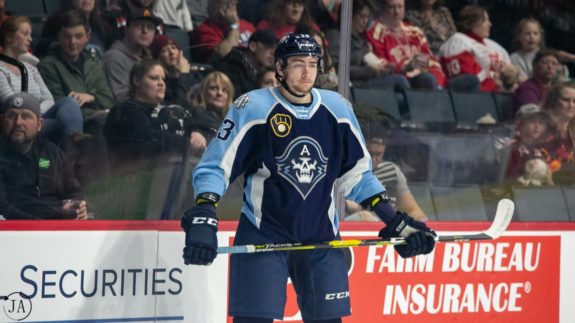
The Predators have talent in the AHL, but few of them got a chance to show it at the NHL level because the bottom-six is so set in stone. Grimaldi was called up out of necessity and thrived. The team needs to create more roster flexibility allow more opportunities for AHLers to prove themselves in Nashville. Rem Pitlick, Yakov Trenin, Laurent Dauphin, and Adam Helewka are a few examples who could do so in 2019-20.
Make a Spot for Tolvanen
The Predators have one of the game’s better prospects in Tolvanen. When he fell to them at 30th in the 2017 Draft, it was a steal. It’s been two years since they drafted him, and he’s played seven NHL games, but he remains a steal. His first season after the draft was spent in the KHL with Jokerit, where he broke league scoring records for his age. This season was mostly spent in the AHL, where he proved he can play a sound two-way game at the professional level, even if his offensive production declined a bit.
He appeared in four NHL games, posting a goal and an assist, and never looking out of place. The Predators have taken the ultra-patient approach with him, not wanting his development to stagnate by rushing him to the NHL. That’s wonderful because he bought into it by not exercising an out clause in his contract that would have allowed him to return to the KHL. After two years in the Predators system, I think it’s time for him to have a role in the NHL. The problem is that he can’t be a fourth-line checking player. He’s too talented for that. Ideally he’s a top-six winger, which is his future ceiling if all goes well, but the best-case scenario for next season is a middle-six role, likely on the third line.
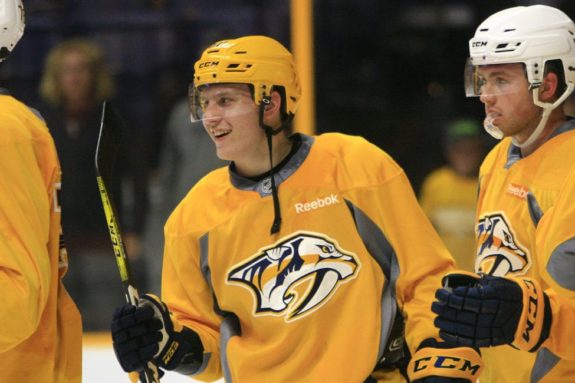
The Predators’ third line, centered by Bonino, brings offense while playing responsible defense. Bonino proved he can play with elite NHL talent by having Kessel on his wing in Pittsburgh, and I feel confident that he’d help Tolvanen’s development in Nashville. Like I mentioned above, the Predators’ issue is that their bottom-six is so cemented that Tolvanen doesn’t really have a role. That needs to change this summer by opening up a spot. Maybe that means trading someone like Smith, or not guaranteeing Järnkrok and Watson a regular role, but either way, Tolvanen is too talented to keep him in the AHL for another season. The Predators need offense and he’s proven himself; it’s time to call him up.
Restock Farm System
This one is pretty obvious, but the Predators need to replenish their farm system at the draft. Poile held onto his first-round pick, which they didn’t have last year. But more than that, the Predators possess seven picks, their most since 2016. Those picks can go a long way in restocking a prospect pool that’s been stripped in recent seasons. They actually have some intriguing forwards in their system, but most are older and in the AHL. They have few forward prospects at the junior level who can move into the AHL in the years to come. That’s an area of need.
I also see their blue line as an area that needs addressed. They’ve done an excellent job at drafting and developing defensemen in recent years. In fact, they’ve developed so many quality blueliners that they traded away Seth Jones and Samuel Girard before either reached his prime. But the team has reached the time where they need to begin developing that next wave of future NHL defensemen. Top defense prospect Dante Fabbro proved he can handle the NHL and deserves a top-four role next season, which will help the blue line get younger.
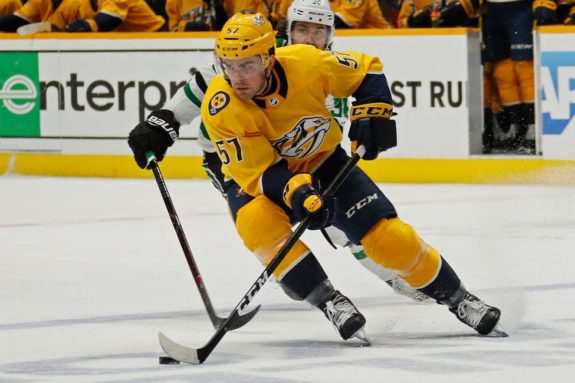
However, their top four from this season are all 28 or older and are either in their prime or moving out of it. In the AHL, Frédéric Allard and Alexandre Carrier could be fifth/sixth/seventh defensemen in 2019-20 and both possess the talent to eventually move into a second-pair role. However, who replaces them in the AHL, and hopefully follows them to the NHL? David Farrance, Spencer Stastney, and Vladislav Yeryomenko are all interesting but are years away and remain relatively unknown. If all works out, they’re part of the next wave that follows Fabbro, and hopefully Allard and Carrier.
But it’s because of the unknown that I think Poile should target defensemen in this year’s draft, and use the first-rounder on one. This draft has a lot of defense prospects projected to go in the back half of the first round, and selecting one they can be patient with will help maintain the team’s run of dominant blue lines.
Keys for a Successful Summer
These nine items will go a long way towards the Predators having a successful offseason, setting themselves up for a potential Stanley Cup run in 2019-20. The team has a strong core, but the roster needs tweaked. I will discuss each of these items in-depth throughout the offseason as the Predators look to enter next season in the best possible situation.